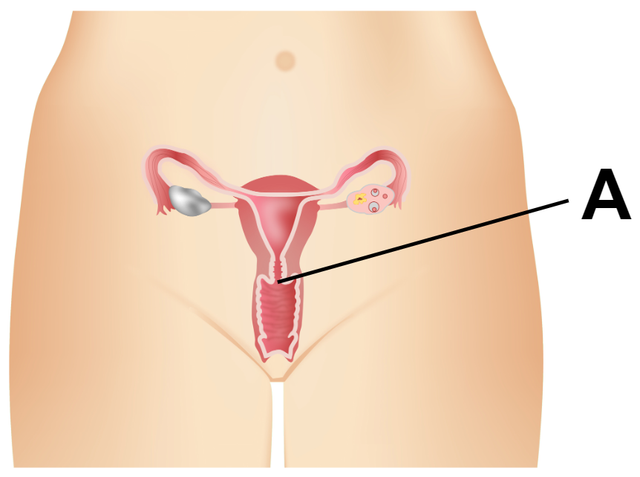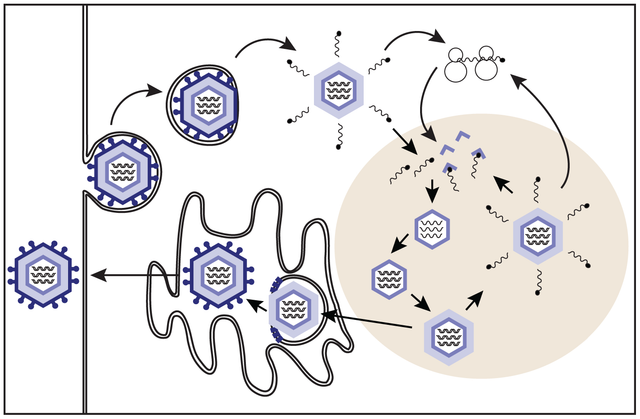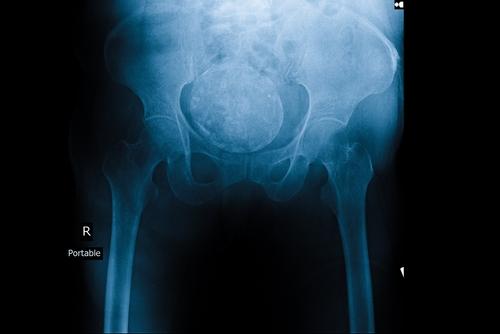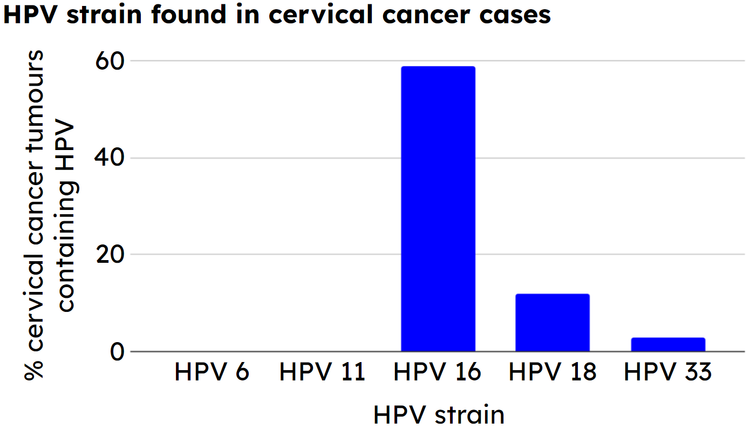Cancer
I can explain how a cancerous tumour is formed and identify some risk factors that increase the likelihood of a person developing cancer.
Cancer
I can explain how a cancerous tumour is formed and identify some risk factors that increase the likelihood of a person developing cancer.
These resources will be removed by end of Summer Term 2025.
Lesson details
Key learning points
- Cancer is a non-communicable disease.
- Cancer is when cells divide uncontrollably and form a tumour.
- Tumours can be benign or malignant.
- Scientists have identified risk factors for certain cancers, including lifestyle and genetic factors.
- Infection with the sexually transmitted infection HPV can increase the risk of cervical cancer.
Keywords
Tumour - a mass of cells that has been produced through uncontrolled cell division
Benign - a tumour that is non-cancerous and contained to one area
Malignant - a tumour that is cancerous and can spread
Risk factor - something that increases the risk of ill health
Sexually transmitted infection - a disease that can be passed from organism to organism through sexual contact
Common misconception
There is nothing a person can do to decreases their risk of getting cancer.
Although we can't change inherited genetic risk factors for cancer, it does also have many associated lifestyle risk factors such as obesity and smoking.
To help you plan your year 10 biology lesson on: Cancer, download all teaching resources for free and adapt to suit your pupils' needs...
To help you plan your year 10 biology lesson on: Cancer, download all teaching resources for free and adapt to suit your pupils' needs.
The starter quiz will activate and check your pupils' prior knowledge, with versions available both with and without answers in PDF format.
We use learning cycles to break down learning into key concepts or ideas linked to the learning outcome. Each learning cycle features explanations with checks for understanding and practice tasks with feedback. All of this is found in our slide decks, ready for you to download and edit. The practice tasks are also available as printable worksheets and some lessons have additional materials with extra material you might need for teaching the lesson.
The assessment exit quiz will test your pupils' understanding of the key learning points.
Our video is a tool for planning, showing how other teachers might teach the lesson, offering helpful tips, modelled explanations and inspiration for your own delivery in the classroom. Plus, you can set it as homework or revision for pupils and keep their learning on track by sharing an online pupil version of this lesson.
Explore more key stage 4 biology lessons from the Health and disease unit, dive into the full secondary biology curriculum, or learn more about lesson planning.

Equipment
None required.
Content guidance
- Depiction or discussion of sensitive content
- Depiction or discussion of violence or suffering
Supervision
Adult supervision required
Licence
Starter quiz
6 Questions


Exit quiz
6 Questions

a cancerous tumour
a non-cancerous tumour



